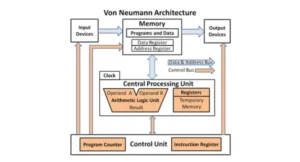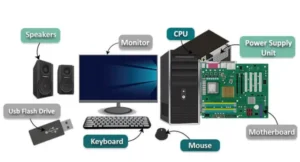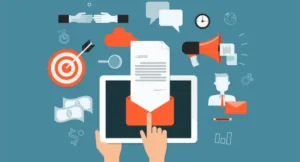Healthcare has grown more digital. This is referred to as the digital healthcare transition. The 21st Century Cures Act provides help for it. The law urges doctors to employ more technology while caring for patients. This is an important step in healthcare digitization. Health Information Technology (HIT) is key to this shift. HIT systems such as Electronic Health Records (EHR) improve work. Doctors and nurses may now provide higher-quality care. Patients also receive swift help. Everyone gains from this digital shift. It helps clinics keep up their structure. It additionally fosters better and safer medical decisions for all patients.
What Are Electronic Health Records (EHR)?
Electronic health records (EHRs) are digital records. They keep a patient’s whole medical history protected. EHRs aren’t like paper files. They store check-up notes, medication lists, test results, and allergy information. EHRs are also distinct from electronic medical records (EMRs). EMR vs EHR is a typical comparison. EMRs remain in one location, whereas EHRs can be shared. Doctors from various hospitals can use them. That allows patients to receive better care faster. EHRs serve as digital repositories. They save digitized patient records in one location. These records are simple to edit. They are also secure and easy to access.
Why Doctors Use Electronic Health Records (EHR)
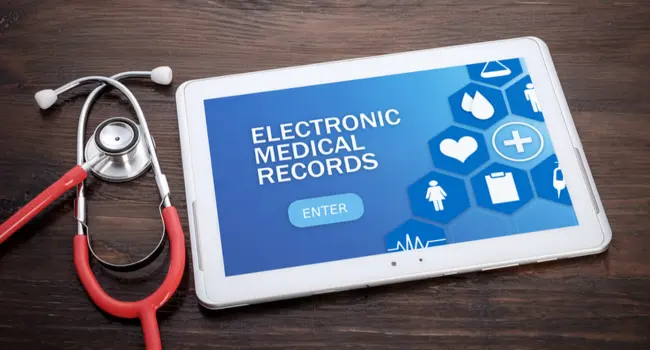
For improved patient care, doctors employ Electronic Health Records (EHR). These electronic tools increase patient safety, aid in care coordination, lower files, and allow better choices based on past health data.
Better Patient Care
EHRs assist clinicians provide better patient care. All health information is stored in one location. This allows doctors to see the complete picture. They can cure people more quickly and provide better care. It leads to enhanced patient care and results. Doctors know what is best for each patient. That’s known as patient-centered care. Everyone receives assistance based on their individual needs. This improves healthcare for each individual. Patients feel understood and cared for. Doctors make better decisions as their knowledge grows. EHRs enable them to provide safe, smart, and tailored care to every patient, every time.
Safer Prescriptions
EHRs make dosing safer. They help doctors to figure out if one drug will react with another. This is known as a drug interaction notice. It avoids possibly fatal errors from arising at all. This is why EHRs are ideal for avoiding pharmacy mistakes. Doctors receive help in selecting the right drug. This makes prescribing easier and safe. It results in safer dosing for every patient. EHRs keep track of previous medication orders as well. This helps to avoid giving the wrong amount of medication. EHRs improve prescription safety. Patients receive the proper drug at the proper moment in time. It ensures everyone’s health and safety.
Less Paperwork, More Time for Patients
EHRs reduce the demand for paper records. This implies that doctors spend less time writing and more time speaking with patients. There is improved time management at the clinic. Doctors can work quicker. It improves administrative efficiency. Everything runs more smoothly when there are fewer forms to fill out. It also eliminates repeating the same experiments. This is known as decreased duplication of testing. Less paperwork equals more time for care. Doctors may focus on what is most important: helping patients. Patients feel more heard. EHRs save time and energy, improving each visit for both doctors and patients.
Easy Access to Patient History
To properly treat you, doctors must review your previous medical history. EHRs allow them to quickly access records. Everything is kept in one digital location. These are referred to as “centralized patient records.” Doctors may simply access your past test results, medications, and visits. This is your patient’s health history. With this information, they can provide better care. It helps to prevent repeating tests or forgetting crucial information. EHRs make it easier to see the big picture. It’s quicker, safer, and better for your health. Past data enables doctors to treat you appropriately now.
Smarter Decisions with EHR Data
EHRs help clinicians make better decisions. They can utilize tools to guide themselves. These technologies are known as clinical decision support. Doctors also make evidence-based decisions. This means they rely on established facts rather than guesswork. Predictive analytics is also used in electronic health records. While EHRs support autonomous decision-making capabilities through predictive analytics, doctors maintain ultimate control over treatment decisions, using these automated insights to intervene early and prevent potential health complications. Patients receive the appropriate care more quickly when clinical choices are made more effectively. EHRs help doctors think clearly and perform more efficiently. All of this makes healthcare safer and more effective. It transforms health records into a tool for improved care.
Faster Sharing Between Doctors
Patients may see multiple doctors. When doctors are unable to share notes, providing care becomes more difficult. EHRs help to address this issue. They make information sharing simple and quick. Doctors can send your records in seconds. This facilitates care coordination across clinics. It’s known as interoperability. Everyone works as a team to assist the patient. It leads to enhanced coordination and better outcomes. There will be no more repeated examinations or missing vital information. EHRs make teamwork simple. This allows you to obtain the proper care from the right doctor. Every time, faster sharing results in better and safer care.
7 Ways Electronic Health Records (EHR) Help Doctors
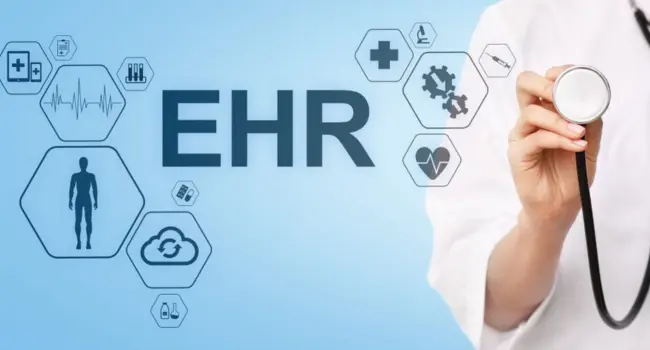
Electronic Health Records (EHR) enable doctors to provide care that is more efficient. They save time, lower errors, secure data, and keep patients happy. EHRs are also affordable for everyone.
1. Improves Quality of Care
Electronic Health Records (EHR) help to higher quality of care. Doctors are able to review a patient’s medical history. This helps them make a better the diagnosis. They provide better health care as they have more knowledge. EHRs collect test findings, previous treatments, and allergies in one location. This makes care safer and faster. Care improvement ensures that every patient receives the help they need on time. It also allows doctors to detect health issues earlier. This leads to faster therapy and better results. EHRs help doctors provide high-quality treatment. Patients feel safer and more cared for after every visit.
2. Increases Efficiency
EHRs accelerate and improve the efficiency of healthcare operations. Doctors save time by keeping digital records. They don’t have to look through paperwork. This is known as simplified workflow. Everything is simple to find and update. As data-driven organizations, modern clinics can accomplish more in less time by leveraging EHR analytics to optimize workflows, predict patient needs, and enhance administrative efficiency across all departments. EHRs help employees manage appointments, billing, and reports more efficiently. This leads to increased efficiency for the entire team. Doctors can concentrate more on patients and less on paperwork. Simple chores are completed quickly. Everyone performs better when things are well-organized. EHRs help clinics run more efficiently every day.
3. Boosts Patient Engagement
EHRs enable people to actively participate in their own care. Many EHRs include patient portals. Through customer service automation features, these patient portals allow users to access test results instantly, receive automated appointment reminders, schedule visits online, and get immediate responses to common health inquiries without waiting for staff assistance. This leads to increased patient engagement. Patients learn more about their health. They can ask questions and make better decisions. This is known as patient empowerment. It allows people to feel in control. They are more likely to take the doctor’s advise. EHRs also help families keep informed. Everyone feels more connected as their access improves. Doctors and patients collaborate as a team. That improves care for all.
4. Reduces Medication Errors
EHRs assist doctors in administering the correct medication on a consistent basis. Drug alerts warn of potentially dangerous drug combinations. This reduces the number of medical errors. If a patient has an allergy to a medication, the EHR displays a warning. This contributes to safe drug management. Doctors can also see what drugs have been utilized previously. This helps to avoid administering the same medicine or the incorrect dose. This process is known as error minimization. EHRs make doctors feel more confidence in their choices. Patients are kept secure from dangerous blunders. Better health is the result of safe care. EHRs safeguard patients from issues before they arise.
5. Enhances Data Security
Patient data must be kept safe. To protect records, EHR systems apply rigorous safety measures. This is an example of data security. These methods keep files safe from hackers and leaks. They comply to PHI privacy guidelines. PHI refers to sensitive health data. Only the right persons are privy to your records. This ensures that safe health information is secure. Advanced identity authentication systems, including multi-factor passwords, biometric verification, and secure access codes, ensure that only authorized medical personnel can access sensitive patient data, maintaining the highest security standards. Patients are at ease when their data is secure. EHRs secure critical data and foster trust. Everyone benefits from having safe and secure medical records.
6. Enhances Data Accessibility
Doctors require immediate access to medical records. EHRs make it possible. This is known as real-time access. With a few clicks, clinicians can view a patient’s test results, history, and treatment plan. This increases data accessibility. EHRs allow for quick access to health data whenever it is required. It saves time and aids in crises. Doctors can make quick, informed decisions. All patient information is straightforward to read and locate. No more delays or lost files. EHRs enable doctors to work faster and smarter. Easy access translates to better care for all patients, every time.
7. Saves Money
EHRs help both clinics and patients save money. They reduced paperwork and printing. That means lower costs. EHRs also prevent repeat tests by displaying previous results. This leads to significant cost reductions. Fewer errors equal less money spent on problem resolution. That also reduces health-care costs. With better records, doctors no longer require additional staff to handle paper files. Everything gets done faster and easier. Patients also benefit from reduced travel and testing costs. EHRs improve the quality of healthcare while saving money. This benefits hospitals, clinics, and families all at once.
How Electronic Health Records (EHR) Improve Patient Care
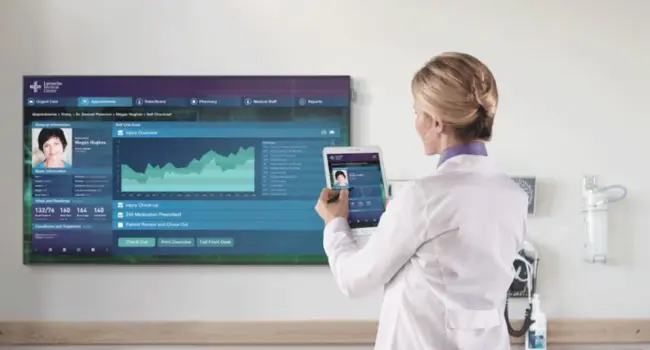
Electronic Health Records (EHR) keep all medical data in one secure location. They foster better interaction and collaboration among doctors. EHRs send out notices and stop repeating exams. This helps patients receive better care.
Better Coordination Between Doctors
Doctors can use EHRs to swiftly share patient information. This improves teamwork among care teams. Interprovider contact refers to the ability of doctors speak well. Strong teamwork gets done via successful interaction. When doctors work together, they can make better choices for patients. By sharing records, every doctor have access to the same data. This saves mistakes and confusion. Patients benefit from more efficient and safe care. Teamwork among care teams helps doctors’ care for complex problems. EHRs foster teamwork, making care easier and effective for all patients.
Helps Patients Be More Involved
EHRs allow patients to access their health records at any time. This access fosters a close patient-clinician bond. Patients who can access their information have greater knowledge of their health. They have the ability to ask insightful requests during visits. This improves communication between patients and providers. Being involved helps patients adhere to their treatment plan. Patient autonomy refers to people taking control of their own health. Patients may easily verify test results and message doctors thanks to patient portals, which are included in many EHRs. This improves their trust and interest in their care, resulting in better health results.
Easier Follow-ups and Reminders
EHRs allow doctors to send automatic reminders for visits and medications. These alerts and reminders help patients stay on target. Access to health data on a timely basis allows clinicians to set up follow-ups more efficiently. Patients do not skip vital check-ups or testing. This technique aids in finding signs of health concerns at an early stage. Automated reminders improve patient care by ensuring that no one misses required therapy. Doctors can use alerts to monitor their patients’ health closely. This saves delays and improves results. Easy follow-ups and reminders help people stay healthy while also allowing clinicians to manage care efficiently.
Less Repeating of Medical Tests
EHRs keep diagnostic test results secure and protected. When results are saved, testing do not have to be repeated. This is known as minimized test duplication. It saves time for both doctors and patients. It also reduces costs for clinics and patients. Smart test result management allows clinicians to avoid unneeded testing. This reduces the likelihood of additional procedures and blunders. EHRs make test histories easy to find. Doctors can easily review previous outcomes and make better recommendations. Fewer medical tests equal better care and reduced expenses for everyone.
The Challenges of Using Electronic Health Records (EHR)
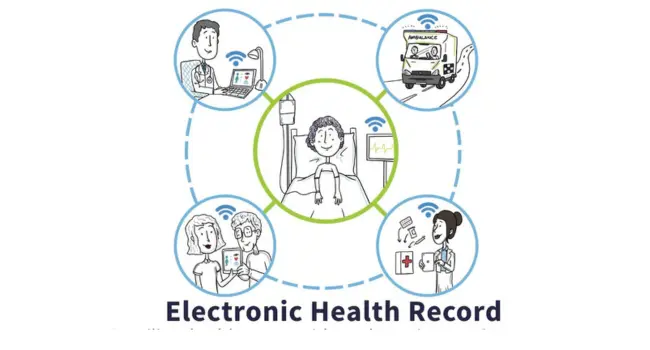
Electronic health records (EHR) are helpful but not always simple to use. Some doctors find EHR training hard. Others find slow systems or worry about keeping patient data secure and secret.
Hard to Learn at First
Some physicians find EHR systems difficult to use at first. This is because EHR training requires time. Learning new technology might be confusing. It may generate user resistance, particularly among those unfamiliar with computers. Initially, doctors may feel stressed. This is known as cognitive burden. It may delay down their work. Some doctors become tired or frustrated. But with proper training and assistance, things improve. Practice makes them feel more confident. The system gradually gets more user-friendly. Even if it is difficult at first, doctors can learn to use EHRs effectively.
Some Systems Are Slow
Not all EHR systems operate quickly. Some take a long time to load. This can be a major issue for busy physicians. It has an impact on how easily EHRs can be used. Doctors require instruments that function swiftly and easily. However, certain systems exhibit usability difficulties. Buttons may be difficult to find, and pages may freeze. These issues waste time. Doctors feel annoyed and rushed. Patient care may suffer as a result of slow systems. Doctors require tools that save time, not steal it. Making EHR systems speedier and easier to use is critical for improving healthcare.
Switching from Paper Takes Time
Moving from paper files to EHR systems is a major undertaking. This is known as the shift to practice. It requires a lot of effort and time. Doctors need to learn how to use the new system. They also need to transfer all old patient data to the computer. This adds a documentation burden. It can make employees feel worried or weary. EHR implementation is not a quick process. It requires strategy, practice, and patience. However, once the changeover is made, it becomes easier. Over time, EHRs help save time and organize records. But at initially, it can be difficult for everyone.
Keeping Patient Data Safe
Keeping patient records safe is crucial. This is known as data security in healthcare. Doctors must protect all health records from hackers or leaks. They see HIPAA compliance rules. These rules ensure patient privacy and security. Doctors employ passwords and other safety measures to protect medical data. However, keeping everything safe needs time and effort. They have to update their systems often. If data is not secure, trust may be lost. That is why privacy and security are crucial factors when using EHRs. Doctors and hospitals work hard to keep all health records secure and secure.
Tips for Doctors to Use EHR Systems Better
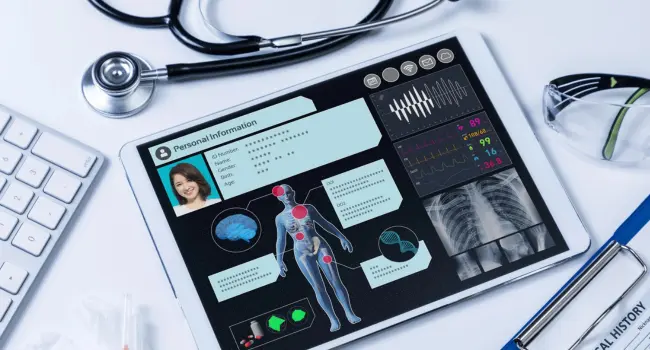
EHR training, innovative tools, and team-based care can help doctors work harder and more effectively. These ideas ease EHR usability and help improve care on every day.
Do Research Before Choosing an EHR
Doctors should compare EHR vendors before selecting one. They can sample EHR demos to learn how the system works. It is advisable to monitor EHR industry growth trends to see what is new and popular. Choosing the appropriate system saves time and money. A successful system should be straightforward and tailored to the doctor’s daily needs. Reading reviews and consulting other doctors can also assist. Each doctor and clinic is unique, so making the appropriate decision is critical. Conducting thorough research makes it easier to identify an EHR that works well from the outset.
Train Your Staff Well
Everyone who uses the EHR system should understand how it works. Peer-led training enables team members to learn from each other. This simplifies and accelerates the learning process. Good EHR onboarding provides the team with step-by-step instructions. It also aids clinical needs, such as learning how to input notes and locate patient histories. If the personnel is well-trained, the entire clinic functions more smoothly. Everyone knows what to do, and there are fewer mistakes. Training also increases confidence. Doctors and nurses feel more comfortable utilizing the system when they understand it. Training is critical to the EHR system’s success.
Use Team-Based Workflows
Doctors, nurses, and other carers work to provide team-based care. It makes patient care easier. When teams share duties, they save time and avoid errors. Workflow efficiency aims to make daily tasks work more smoothly. This reduces doubt on what to do. Cooperative care allows teams to solve issues as a group. It also allows patients to receive proper treatment faster. When everybody uses the EHR together, they can see updates quickly. This helps the entire team stay informed. Teamwork using EHRs leads to better care and happy people.
Try Tools Like AI and Helpful Apps
Doctors can employ advanced devices such as digital scribes, which take notes automatically. Some apps use AI algorithms to help identify patient issues more quickly. Others employ SMART-on-FHIR apps, which connect to EHRs and display other health data. These gadgets help doctors save time and operate better. They should be basic and not difficult. The idea is to make the doctor’s job easier rather than harder. These new tools work similarly to helpers. They do not replace the doctor. They simply make things go faster. Using good tools and apps can make the EHR system more powerful and user-friendly.
Keep Learning and Updating Skills
Doctors should continue to learn about EHR optimization. This involves discovering improved methods to use the system. Regular education enables doctors to keep up with new technologies and changes. It also gives them extra trust. Health-care systems change rapidly, thus learning never stops. Doctors who continue to learn may grow their careers in health care IT. They may educate others or assist in a betterment of EHRs. Staying current also results in fewer errors and faster care. Learning doesn’t have to be difficult. A few hours every week is highly beneficial. Smart doctors continue to learn how to provide the best possible care.
What’s Next for Electronic Health Records (EHR)?
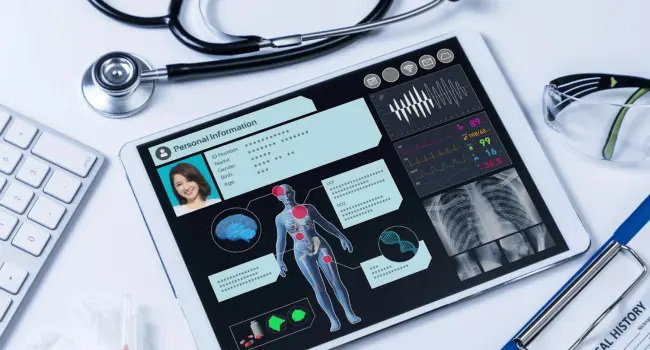
The future of EHRs seems promising. New mobile health apps, AI in healthcare, and telemedicine integration will make care more convenient. Every day, these smart gadgets will benefit doctors and patients alike.
Using AI in EHR Systems
In the future, more EHRs will include artificial intelligence into healthcare. These gadgets enable doctors to save time. For example, natural language processing allows clinicians to speak while the computer takes notes. This allows them to complete faster. More hospitals are experimenting with these instruments. This demonstrates widespread health AI usage. Through applied machine learning algorithms, AI can analyze vast amounts of patient data to provide intelligent alerts, identify complex health patterns, and make evidence-based clinical recommendations. However, doctors still make the final decisions. The objective is to make EHRs smarter and faster. These tools enable clinicians to spend more time with patients rather than typing. AI can be a huge help in healthcare.
Making EHRs Easier for Doctors
EHRs should be straightforward to use. Many new systems now have user-centered design. This means they’re designed with doctors in mind. Simple systems reduce cognitive effort. Doctors do not become weary or upset when utilizing them. EHR usability refers to how quickly and easily a system functions. The easier it is, the better doctors can provide care to their patients. Doctors make fewer mistakes when buttons are in the proper locations and screens are clear. Smart design enables doctors to operate faster and safer. Making EHRs simple is a significant step toward improving healthcare for everyone.
New Tools and Apps Coming Soon
Many new instruments are being developed to help doctors. Patients and doctors can communicate even when they are separated by distance thanks to mobile health apps. Doctors can now monitor patients via video calls thanks to telemedicine integration. These tools speed up and simplify the care process. In the future, we expect to see more IoT in healthcare tools. These are smart devices that monitor your health from home. They transfer information directly to the doctor’s EHR. This allows doctors to act quickly if there is a problem. All of these solutions collaborate with EHRs to provide improved treatment. They bring hospitals and patients closer, even from afar.
Final Thought
Electronic Health Records (EHR) let clinicians work more efficiently and effectively. They make patient information easier to find and share. This implies healthcare delivery is safer and faster. As more hospitals go digital, EHR systems will get smarter. Health information technology, mobile health apps, and team-based treatment are all effective tools. Doctors and nurses may now devote more time to patients and less time to paperwork. Patient records are kept safe thanks to rigorous data security in healthcare. The future of electronic health records is full of novel concepts. With the proper training and equipment, doctors can provide better treatment on a daily basis.


